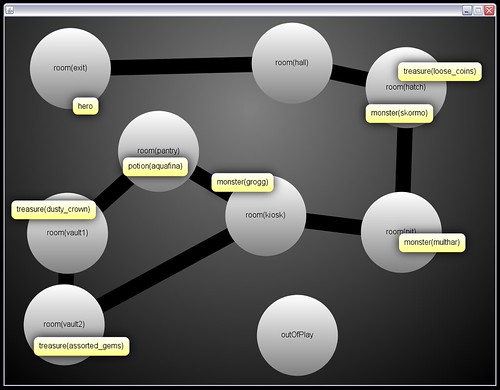
A sketch for a "cute little dungeon crawl"
I’ve got a whole philosophy of game design I’m sitting on here, but today I’d like to share just one little provocative tidbit: game designers design players too.
Imagine you thinking through the design of some cute little dungeon crawl. You are going to have caverns connected by twisty passages, a hero/jerk who is capable of slaying roaming monsters/bunnies, and some inventory to hold potions and loot/bling. This isn’t a complete design, its just a setting and maybe a sketch for some rules saying how objects in the game world might interact. In conversation, you might follow up this description with a little story showing the rules in action (and filling in some interaction details): the hero starts at the mouth of the dungeon, she continues down a hall to a room with a large hatch, while gathering some loose coins she encounters the feeble but unfriendly monster, after slaying Skormo she descends past the hatch into a pit and encounters Multhar on patrol…
Yeah, this little narrative is the start of a play trace (or user story if you like). I wouldn’t make the claim that you always invent play traces for you games (sometimes coherent traces don’t emerge until play testing), but I will claim that part your primitive idea included a pile of expectations that describes how a player intersecting your idea will act. You knew that the player would attack Skormo right after it proved hostile, you knew she wouldn’t try to add the monster’s corpse to her inventory and then immediately try to use it like a potion, and you knew the hero wouldn’t just hang out at the dungeon’s exit — its just common sense. Well, you didn’t really know, the player could probably do all of those silly things in the completed version of your game, but your design told you what to expect.
Call it a pile of expectations, call it a “player model”, call it what you will. Can you think of any coherent game design that didn’t come with a “player” in this sense?
Read More »



